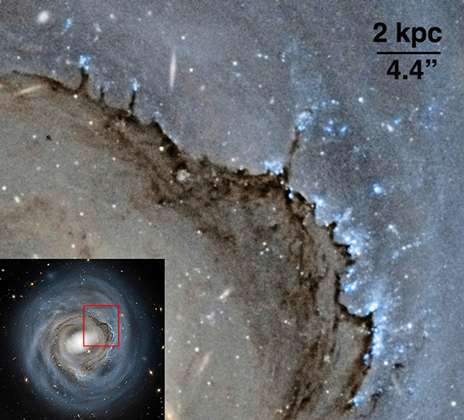Apperently galactic dust and cosmic wind is now understood on a far greater level:
Astronomers have long known that powerful cosmic winds can sometimes blow through galaxies, sweeping out interstellar material and stopping future star formation. Now they have a clearer snapshot of how it happens.
A Yale University analysis of one such event in a nearby galaxy provides an unprecedented look at the process. The research is described in the Astronomical Journal.
Specifically, Yale astronomer Jeffrey Kenney looked at the way the cosmic wind is eroding the gas and dust at the leading edge of the galaxy. The wind, or ram pressure, is caused by the galaxy’s orbital motion through hot gas in the cluster. Kenney found a series of intricate dust formations on the disk’s edge, as cosmic wind began to work its way through the galaxy.
Let’s find out more on what this means for galactic evolution and check out a video on the next page
